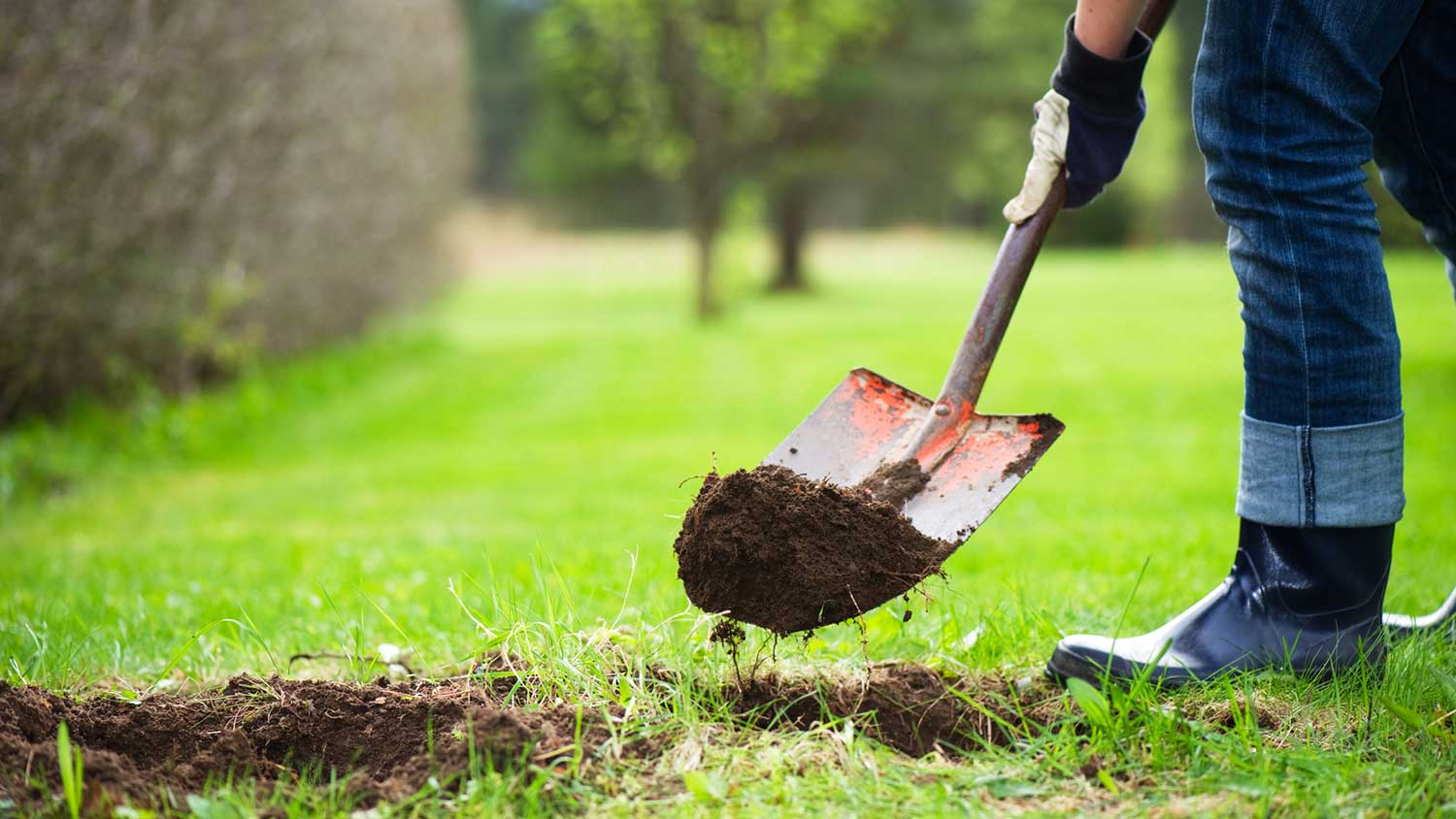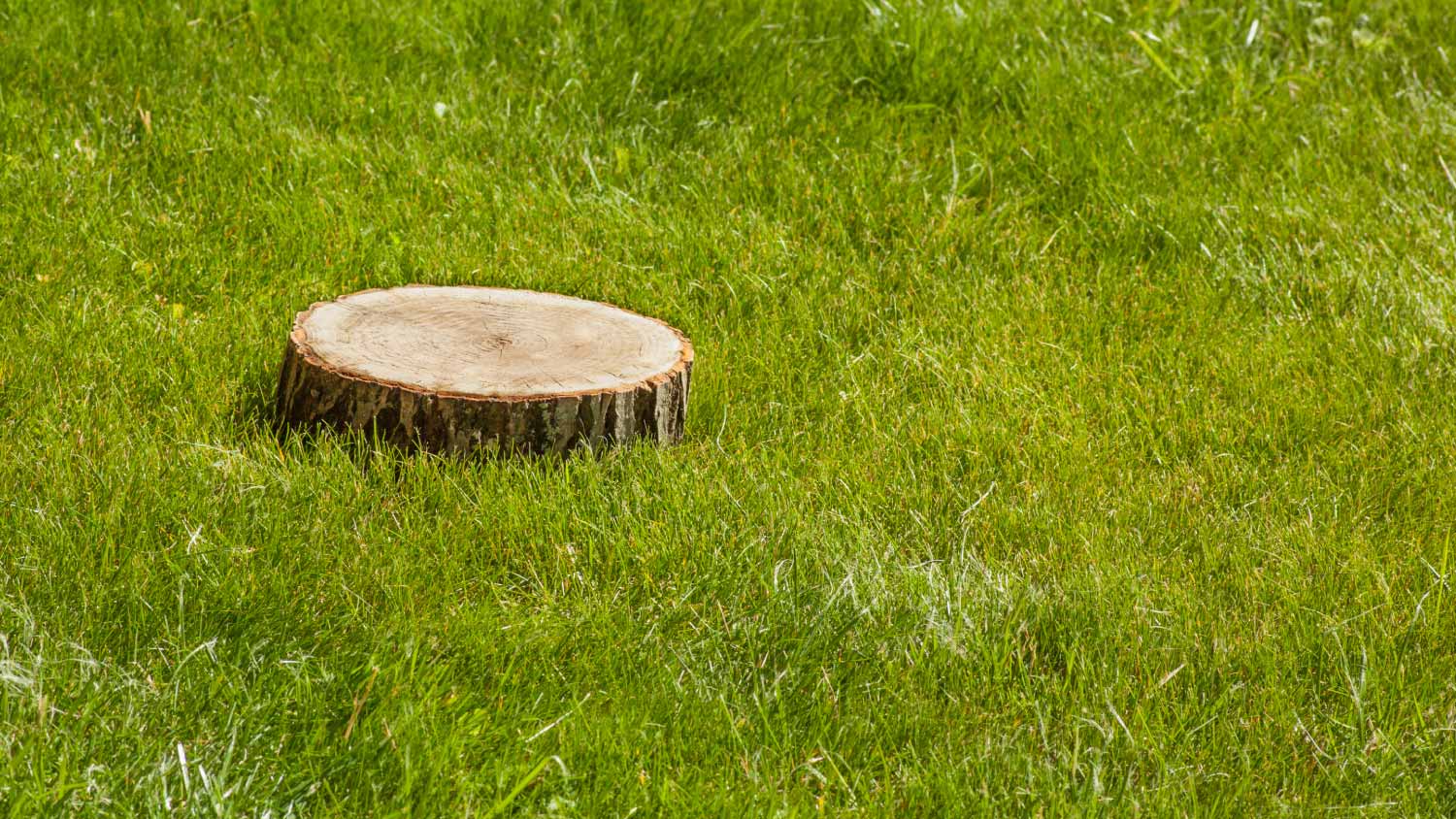
How much does a palm tree cost? The answer depends on the type of tree, its size, and other factors. Find out how much a new palm tree costs.
Without boundaries, bamboo will walk all over your yard


Bamboo is a gorgeous option for privacy hedges or a tranquility garden—but how do you plant it? While the idea of growing bamboo causes some homeowners to pause since it’s known to be invasive, you just have to know a few tricks.
This guide will show you how to plant bamboo so it doesn’t take over the neighbor’s yard and care tips that’ll help you keep it thriving.

Bamboo is technically a type of large grass that’s native to tropical, subtropical, and temperate climates. It pretty much grows everywhere on the globe except cold climates like Europe. You’ll even find it naturally in the southern United States, though 62% of the whopping 1,439 species are native to Asia.
The reason bamboo is often classified as invasive is because it spreads easily through underground stems called rhizomes, and it can quickly grow to enormous heights. According to Science Focus, the Chinese moso bamboo can grow about 3 feet per day. It’s also so great at growing because it focuses on height and doesn’t put out leaves until it’s fully grown. That’s also what makes it a great privacy hedge. It will grow to the right height quickly, but you’ll need growth mitigation strategies to stop the spread.
Homeowners often plant bamboo for privacy, and it can be more affordable than the cost of a privacy fence. The hedge itself is usually between $250 to $500 for a 15-foot to 25-foot plant. It’ll be more for larger plants and less for smaller plants.
Despite that, you’ll have to also factor in the cost of maintenance because of bamboo’s vigorous growth. The cost of bamboo removal is typically between $450 to $1,300 (about $100 to $200 per plant).
The best time to plant bamboo depends on the species and the climate. Generally, spring is ideal because your plant will have the whole growing season to establish its roots before it becomes dormant in autumn. In mild climates, timing makes less of a difference.
As a rule, plant cold-hardy varieties three months before the first frost and use a thick mulch to insulate the roots. Bamboo doesn’t reach its full cold-hardy potential until the roots are fully established. If you live in a colder climate, planting later in the summer or early fall could inhibit growth.
Planting bamboo is actually a simple six-step process. Since it grows easily, you just need to choose the right spot and pop it in the ground.

Bamboo comes in clumping or running types. The names are exactly what they sound like. Clumping types grow in clumps, and have shorter rhizomes. Running types spread horizontally and have longer rhizomes. For this reason, running types are often classified as invasive.
For most backyard design ideas, including privacy hedges, you’ll want to choose a clumping type to avoid uncontrolled spread. You can plant a running type in a container without worry, but if it’s planted in the ground, you’ll need to add a root barrier and regularly prune.
Keep in mind that some running types of bamboo may be banned in certain areas, so check with your city before you plant.
Bamboo generally needs at least four hours of filtered sun per day to thrive. Some species prefer full sun, while others do well in the shade. As a general rule, the best location is a sunny spot with fertile, neutral to slightly acidic, well-draining soil.
If that’s not your yard, don’t worry. Conditions don’t need to be perfect. They just have to be good enough. Bamboo can survive pretty much anywhere that’s not too cold.

Once you choose where you want to plant your bamboo, dig a hole that’s twice as wide as the root ball. Make sure you space out plants so they have room to grow. Leave a few feet between plants.
Place your bamboo in the hole and spread out the roots. Refill the hole with soil and gently tamp it down. Water your bamboo right after planting to help eliminate air pockets. This method should help the plant quickly establish itself.

For front yard landscaping, you’ll probably want to grow bamboo in containers. Otherwise, if you plant running bamboo in the ground, you’ll need to control the spread using a bamboo barrier. You can purchase one of these online.
The barrier should:
Span 2–3 inches underground
Span 2–3 inches above-ground
Go completely around the bamboo
Regularly check the barrier and prune anything growing over the top. This should be done at least once a year.
Consider adding a layer of mulch to your bamboo roots that is 2 to 4 inches deep. This helps the roots retain moisture, adds some nutrients, and prevents weed growth.

Once you plant your bamboo, it’ll take about two weeks for the plant to establish itself. During this phase, proper care is extremely important. Established bamboo can weather a little neglect, but only if it already has strong roots.
Bamboo typically needs at least 1 inch of water per week. During some seasons, you might get enough rainfall to largely avoid manual watering. The trick to a well-established plant is to water it deeply to encourage strong root growth and protect the plant from drought. Use a lot of water, but let the soil dry in between watering.
For the first two weeks, try to shade your newly planted bamboo. This gives it a chance to retain extra moisture and grow stronger roots. You can use patio umbrellas or portable screens.
Avoid raking away fallen leaves from the base of your bamboo. These leaves protect the roots, retain moisture, and re-fertilize the soil.
Bamboo responds well to regular feedings with liquid grass fertilizer. Fertilize it at least three times during the growing season, which is typically from spring to autumn. Alternatively, you can add a layer of compost in the spring.
Once your bamboo is established, you’ll need to prune it. Regularly inspect the roots by digging down to the base of the plant. If there are any wandering rhizomes, remove them. You should also regularly remove branches that are dead or too heavy. You can cut back dead or dying canes in the spring at the start of the growing season.
Bamboo isn’t quite as hardy in containers, so you’ll need to treat your potted bamboo with a little extra care. Make sure you water it when the top of the soil appears dry. Give it a good soak until the water runs out the drainage holes. You may need to water your potted bamboo daily in high temperatures.
For some people, gardening is a passion—even if it takes a lot of work. Growing bamboo will require ongoing maintenance like pruning, watering, and fertilizing. If you don’t have the time, hire a local gardener.
This is also a good idea if you’re not knowledgeable about bamboo. You wouldn’t be the first homeowner to accidentally buy a running type and wake up one day with it taking over the yard.
For homeowners who want to grow bamboo for privacy, a local landscaper can help you plan the perfect privacy hedge. It’s a little trickier than growing a bamboo plant in a pot, but you’ll get a unique backyard design that you can’t obtain any other way.
Bamboo is easy to grow because it is tolerant of many different conditions. It will grow in almost any type of soil as long as it’s well-draining and fertile. It can survive in less than ideal lighting conditions and can even withstand drought to an extent.
Most bamboo plants require at least four hours of filtered sunlight to grow. Some species prefer shadier environments while others thrive in full sun.
Newly planted bamboo will establish roots within two weeks and grow to its maximum height in six to nine months. Some varieties reach their full height sooner. Others a little later. Either way, most plants take a few years to fully mature.
You can propagate bamboo with a cutting of the culms (the woody, ringed stalk) or rhizome. If you do cut the stalk, make sure your cutting contains three to four nodes. You can root it in water as long as one node is completely submerged.
From average costs to expert advice, get all the answers you need to get your job done.

How much does a palm tree cost? The answer depends on the type of tree, its size, and other factors. Find out how much a new palm tree costs.

The cost to remove palm trees depends on several factors, including their size, location, and more. Our guide shows the average palm tree removal costs.

Trimming your bushes is one of the less costly aspects of landscaping, and it’s helpful to bundle many trimming services together to save money.

Before a tree stump can become rustic decor in your landscape, it’s crucial to protect it from rot, pests, and decay. Learn how to preserve a tree stump.

If your palm tree looks dead, there are several ways to bring it back to life. Our guide will show you what to do with a dead palm tree.

What is an arborist and do they cut down trees? Learn what an arborist is, the services they offer, and when to hire one.